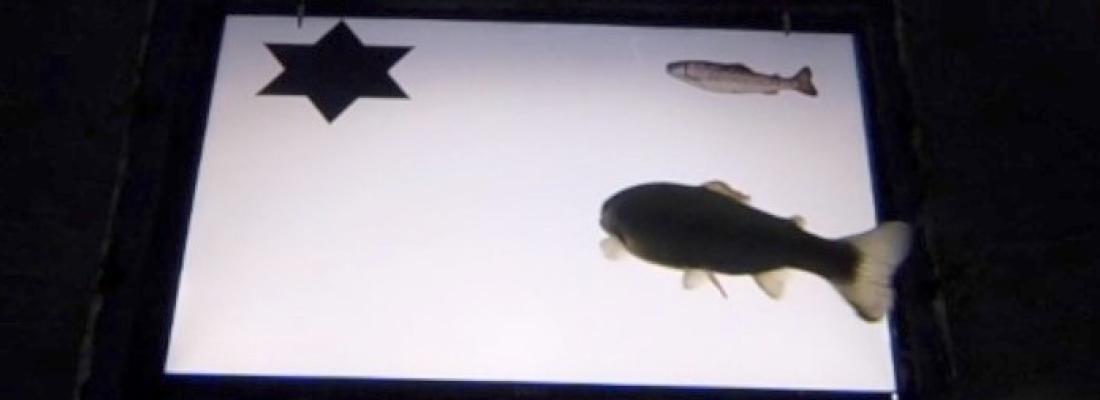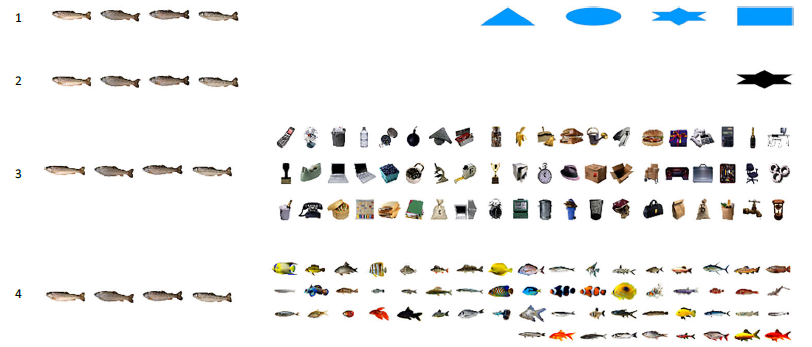Biodiversity Reading time 5 min
Rainbow trout can recognize their own
Published on 25 March 2021

Cognitive abilities were studied in rainbow trout, the first continental fish production in Europe. Increasing public concern for the welfare of farmed-fish species highlighted the need for better knowledge of the cognitive status of fish.
We trained and tested 15 rainbow trout with an operant conditioning device composed of self-feeders positioned in front of visual stimuli displayed on a screen. The device was coupled with a two-alternative forced-choice (2-AFC) paradigm to test whether rainbow trout can discriminate 2-D photographs of conspecifics (S+) from different visual stimuli (S-). The S- were applied in four stages, the last three stages representing increasing discrimination difficulty: (1) blue shapes; (2) black shape (star); (3) photograph of an object (among a pool of 60); (4) photograph of another fish species (among a pool of 60).
Stages Photograph S+ Photograph S-

Nine fish (out of 15) correctly managed to activate the conditioning device after 30–150 trials. The rainbow trout were able to discriminate images of conspecifics from an abstract shape (five individuals out of five) or objects (four out of five) but not from other fish species. Their ability to learn the category "fish shape" rather than distinguishing between conspecifics and heterospecifics is discussed. The successful visual discrimination task using this complex operant conditioning device is particularly remarkable and novel for this farmed-fish species, and could be exploited to develop cognitive enrichments in future farming systems. This device can also be added to the existing repertoire of testing devices suitable for investigating cognitive abilities in fish.
Kleiber, A.; Valotaire, C.; Patinote, A.; Sudan, P.L.; Gourmelen, G.; Duret, C.; Borel, F.; Legoff, L.; Peyrafort, M.; Guesdon, V.; Lansade, L.; Calandreau, L.; Colson, V. 2021. Rainbow trout discriminate 2-D photographs of conspecifics from distracting stimuli using an innovative operant conditioning device. Learning & Behavior: 15. http://dx.doi.org/10.3758/s13420-020-00453-2
